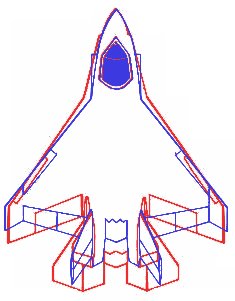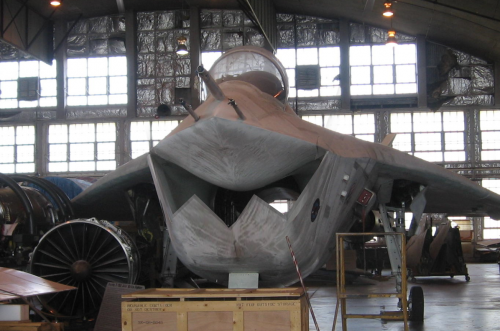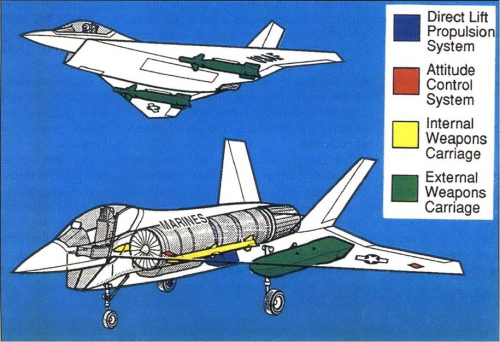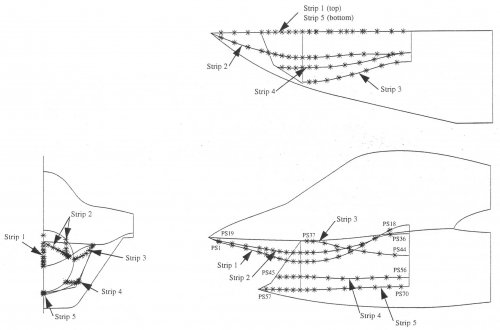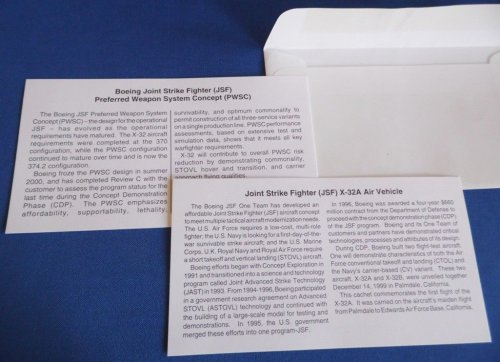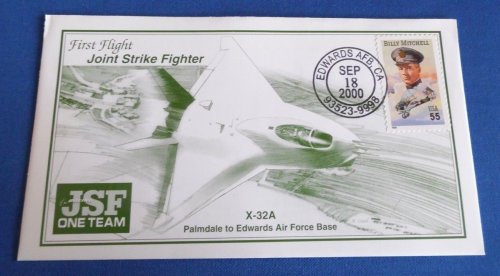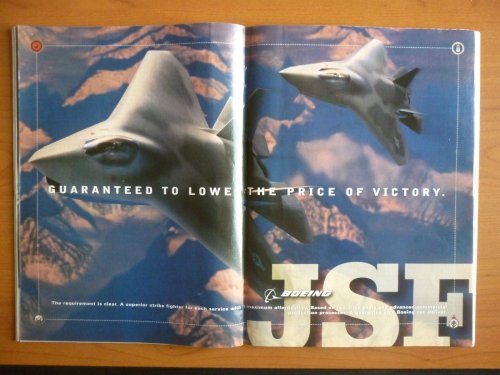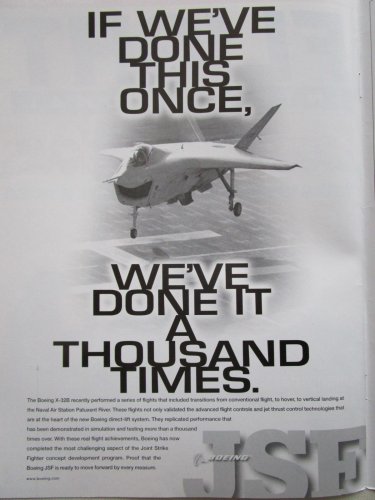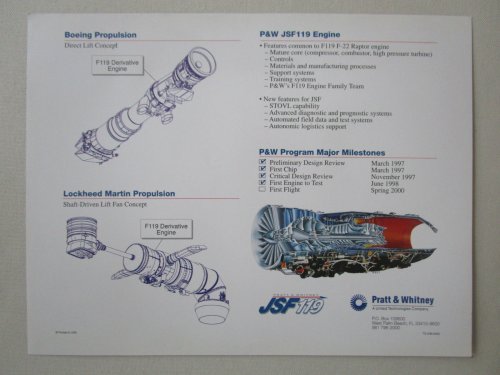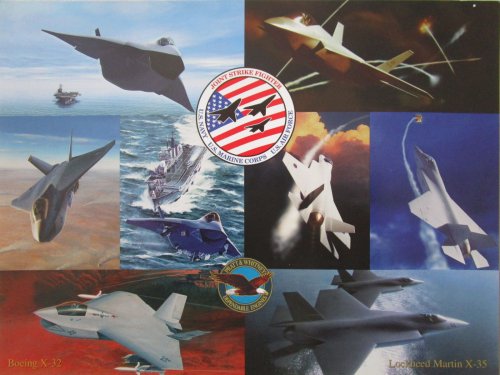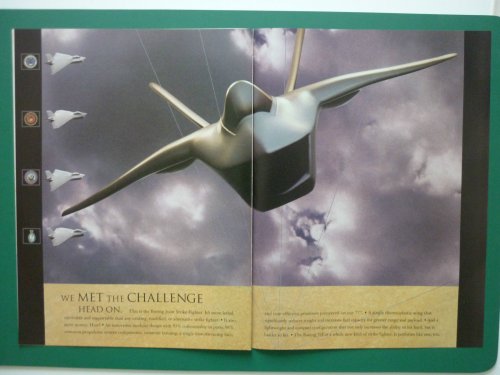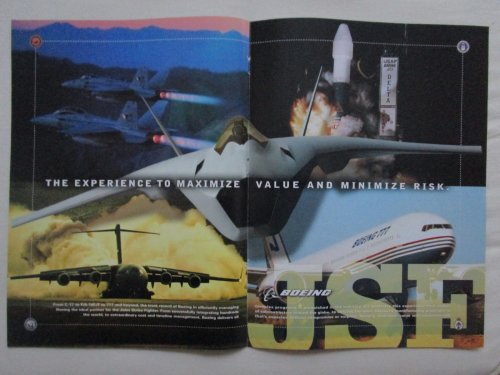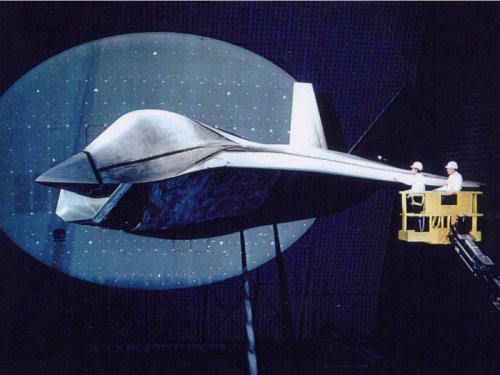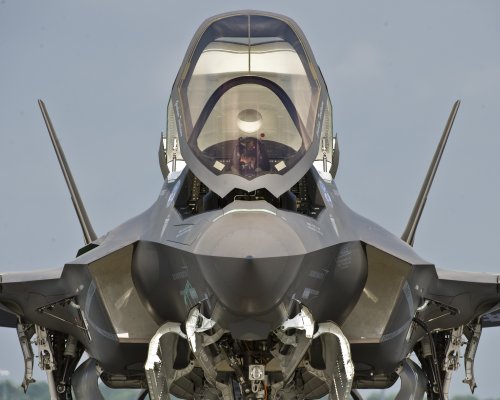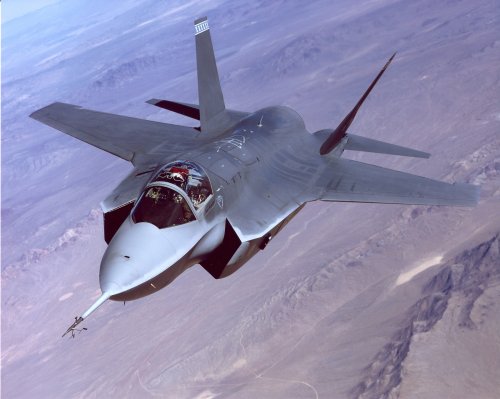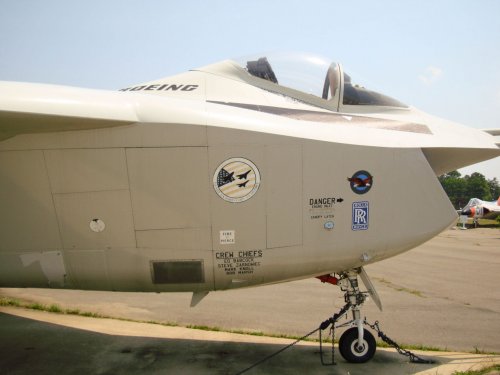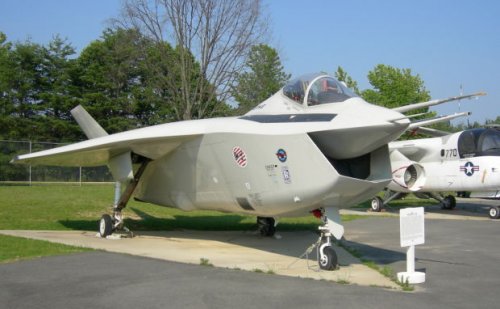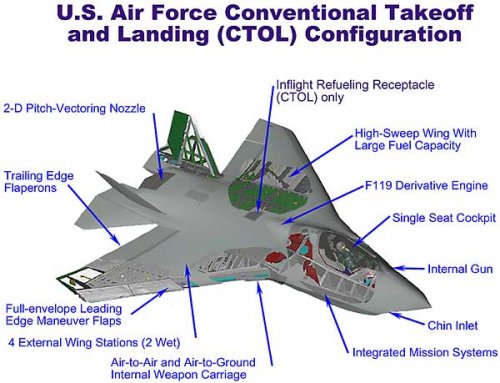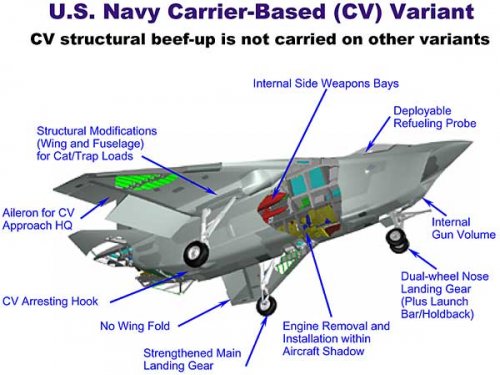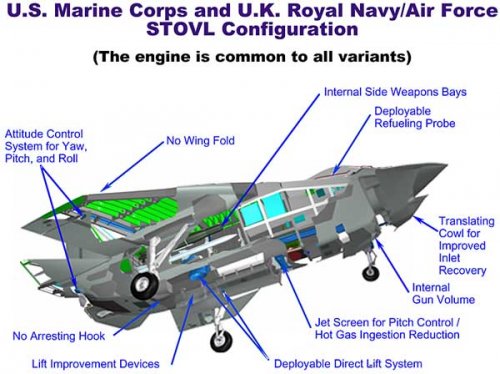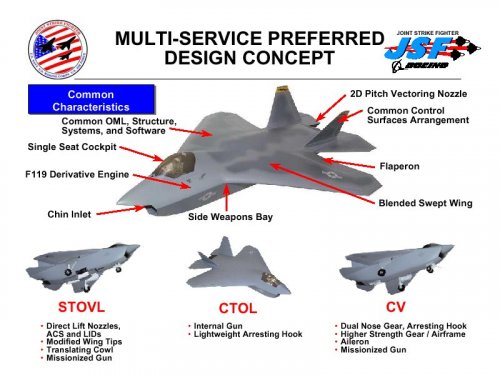You are using an out of date browser. It may not display this or other websites correctly.
You should upgrade or use an alternative browser.
You should upgrade or use an alternative browser.
Boeing JAST / JSF / X-32 /PWSC F-32 projects
- Thread starter Archibald
- Start date
- Joined
- 18 March 2008
- Messages
- 3,529
- Reaction score
- 954
sferrin said:On the other hand they didn't scrap the entire X-35 design like they did with the X-32.
Not this again? We went through this years ago...
There were only minor changes to the X-32 design to change the tail. These were made because the USN changed their requirement for control in landing. The changes were not made because of any fault in the design. But rather because the customer changed their mind half way through the program. And the changes may make the plane look different on the outside but they were very minor on the inside.
I understand that when someone *believes* something very strongly no amount of factual refutation can change their mind. But if you want to criticise the Boeing JSF entry there are plenty of actual factual reasons to do so. Not this made up one of them "scrapping the entire design".
- Joined
- 3 June 2011
- Messages
- 18,297
- Reaction score
- 12,113
Abraham Gubler said:sferrin said:red admiral said:On the other hand they didn't scrap the entire X-35 design like they did with the X-32.
Not this again? We went through this years ago...
There were only minor changes to the X-32 design to change the tail. These were made because the USN changed their requirement for control in landing. The changes were not made because of any fault in the design. But rather because the customer changed their mind half way through the program. And the changes may make the plane look different on the outside but they were very minor on the inside.
I understand that when someone *believes* something very strongly no amount of factual refutation can change their mind. But if you want to criticise the Boeing JSF entry there are plenty of actual factual reasons to do so. Not this made up one of them "scrapping the entire design".
Saying the difference between a delta and a conventional wing with a 4-tail is "minor" does not make it so just because you believe it so. Sorry.
- Joined
- 2 August 2006
- Messages
- 3,253
- Reaction score
- 1,520
sferrin said:red admiral said:sferrin said:Consider that the X-32 had to go to a sea-level location and leave parts on the ground just to do a vertical landing.
Whereas X-35 left the entire weapon bays out and hence shedded loads of fuselage structural mass in addition to transonic drag...
Not a like with like comparison
On the other hand they didn't scrap the entire X-35 design like they did with the X-32.
Is that what you said about Northrop Grumman YF-23 when Lockheed Martin had to go back to the drawing board and completely redesign the YF-22?
- Joined
- 18 March 2008
- Messages
- 3,529
- Reaction score
- 954
sferrin said:Saying the difference between a delta and a conventional wing with a 4-tail is "minor" does not make it so just because you believe it so. Sorry.
That is semantics. Definitions of words does not determine engineering. You might as well say the difference between the Dassault Mirage and Convair Hustler is "minor" because they are both pure delta wing aircraft.
If all you do in design change is truncate the chord of the cropped delta wing and graft a horizontal tail on the back of the fuselage the change is minor. Same wing structure, same fuselage, same fins, same mission systems.
Further if the only reason you make this change is because the customer change's their requirements it does not mean there was anything wrong with the original design. Something that you suggest in your original argument.
You are wrong in detail (design change) and wrong in meaning (value of the original design).
- Joined
- 3 June 2011
- Messages
- 18,297
- Reaction score
- 12,113
I'll give you point 2 (value of original design) though, given the required radical redesign of the OML, the X-32 as actually flown was clearly closer to the margins than the X-35 in more than just weight. As for "minor change", I can't believe you would try to peddle that with a straight face. YF-22 -> F-22A yeah, those were a series of minor changes. Going from a delta wing to a standard swept wing and tail, no.
marauder2048
"I should really just relax"
- Joined
- 19 November 2013
- Messages
- 3,157
- Reaction score
- 926
The Navy really should have (or been forced to) overcome its aversion to blown flaps. Probably would have saved Boeing's original design and allowed
LM to reuse the CTOL/STOVL wing for the CV version.
LM to reuse the CTOL/STOVL wing for the CV version.
- Joined
- 18 March 2008
- Messages
- 3,529
- Reaction score
- 954
sferrin said:the X-32 as actually flown was clearly closer to the margins than the X-35 in more than just weight.
This is not true. The control during landing approach is a series of absolute figures that must be reached. X amount of side force, Y amount of roll response. The X-32 meet these USN requirements. When they changed these requirements they had to change the design to meet them. The X-35 didn’t need to change because they had chosen a design that exceeded these requirements. The difference had nothing to do with being close to the “margins” of controllable flight but to do with how the wing generated lift in landing and takeoff and how the aircraft controlled its pitch. The difference between a tailless aircraft (aka delta) and one with a tail.
sferrin said:As for "minor change", I can't believe you would try to peddle that with a straight face. YF-22 -> F-22A yeah, those were a series of minor changes. Going from a delta wing to a standard swept wing and tail, no.
Put your aviation dictionary away and actually look at the design change and maybe you might understand the issue. See the attached graphic overlaying the X-32 to the F-32 designs. The change to the wing is an inboard slice is moved to the outboard and the trailing edge changed from forward sweep to aft sweep. Then an extra pipe was added to the tail from which was hung some new horizontal tails. The change to the aft is actually more major than the wing change and is so minor in itself that the slight change to wing centre of lift appears to completely compensate for it CG wise.
This is a minor change and has nothing to do with YF-22 to F-22. Minor as in it didn’t mean anything significant to the engineering and flight testing of the Boeing offer. Since you have conceded the main point of your argument (that this design change meant the X-32 was flawed) there is little reason for you to maintain this obstinate position.
Attachments
- Joined
- 2 August 2006
- Messages
- 3,253
- Reaction score
- 1,520
sferrin said:I'll give you point 2 (value of original design) though, given the required radical redesign of the OML, the X-32 as actually flown was clearly closer to the margins than the X-35 in more than just weight. As for "minor change", I can't believe you would try to peddle that with a straight face. YF-22 -> F-22A yeah, those were a series of minor changes. Going from a delta wing to a standard swept wing and tail, no.
FYI, I wasn't talking YF-22 to F-22A, I was talking about how Northrop was held up flying their prototype that they didn't have to redesign while Lockheed completely redesigned their YF-22 submission. Of course, having said that, what I want to know is why the USAF wasn't able to figure out that the original YF-22 design was such a dog. Though it did look better than the YF-22 prototype they ended up flying. Granted, looks don't win the competition.
For reference, see their design proposal in the first image here.
RadicalDisconnect
Anthony Foulke
- Joined
- 28 April 2014
- Messages
- 212
- Reaction score
- 127
Sundog said:sferrin said:I'll give you point 2 (value of original design) though, given the required radical redesign of the OML, the X-32 as actually flown was clearly closer to the margins than the X-35 in more than just weight. As for "minor change", I can't believe you would try to peddle that with a straight face. YF-22 -> F-22A yeah, those were a series of minor changes. Going from a delta wing to a standard swept wing and tail, no.
FYI, I wasn't talking YF-22 to F-22A, I was talking about how Northrop was held up flying their prototype that they didn't have to redesign while Lockheed completely redesigned their YF-22 submission. Of course, having said that, what I want to know is why the USAF wasn't able to figure out that the original YF-22 design was such a dog. Though it did look better than the YF-22 prototype they ended up flying. Granted, looks don't win the competition.
For reference, see their design proposal in the first image here.
Reading Aronstein and Hirschberg's ATF book, it seems like the USAF chose Lockheed not because its actual aircraft design but because if its effort in performing trade studies on operational requirements. So what Lockheed actually submitted as their design was somewhat irrelevant. I think the basic configuration of the F-22 was designed in something like a few months in 1987.
- Joined
- 3 June 2011
- Messages
- 18,297
- Reaction score
- 12,113
Sundog said:sferrin said:I'll give you point 2 (value of original design) though, given the required radical redesign of the OML, the X-32 as actually flown was clearly closer to the margins than the X-35 in more than just weight. As for "minor change", I can't believe you would try to peddle that with a straight face. YF-22 -> F-22A yeah, those were a series of minor changes. Going from a delta wing to a standard swept wing and tail, no.
FYI, I wasn't talking YF-22 to F-22A, I was talking about how Northrop was held up flying their prototype that they didn't have to redesign while Lockheed completely redesigned their YF-22 submission. Of course, having said that, what I want to know is why the USAF wasn't able to figure out that the original YF-22 design was such a dog. Though it did look better than the YF-22 prototype they ended up flying. Granted, looks don't win the competition.
For reference, see their design proposal in the first image here.
I wasn't responding to you.
- Joined
- 3 June 2011
- Messages
- 18,297
- Reaction score
- 12,113
RadicalDisconnect said:Sundog said:sferrin said:I'll give you point 2 (value of original design) though, given the required radical redesign of the OML, the X-32 as actually flown was clearly closer to the margins than the X-35 in more than just weight. As for "minor change", I can't believe you would try to peddle that with a straight face. YF-22 -> F-22A yeah, those were a series of minor changes. Going from a delta wing to a standard swept wing and tail, no.
FYI, I wasn't talking YF-22 to F-22A, I was talking about how Northrop was held up flying their prototype that they didn't have to redesign while Lockheed completely redesigned their YF-22 submission. Of course, having said that, what I want to know is why the USAF wasn't able to figure out that the original YF-22 design was such a dog. Though it did look better than the YF-22 prototype they ended up flying. Granted, looks don't win the competition.
For reference, see their design proposal in the first image here.
Reading Aronstein and Hirschberg's ATF book, it seems like the USAF chose Lockheed not because its actual aircraft design but because if its effort in performing trade studies on operational requirements. So what Lockheed actually submitted as their design was somewhat irrelevant. I think the basic configuration of the F-22 was designed in something like a few months in 1987.
At the time they finalized it to LM and NG that seems to be the case. There was an interesting quote by one of the GD guys in an Airtime Publishing book (WAPJ probably) where they told LM "that thing won't even be able to fly" shortly after they became team mates after the down select. Then it was back to the drawing board.
Zeppelin
ACCESS: Confidential
- Joined
- 28 May 2009
- Messages
- 87
- Reaction score
- 30
I bet, it they had just got rid of the cleft chin design and gone for a more aggressive retro shark tooth edge - Would it really compromise performance. isn't this whole competitive pitch more about securing to contract and selling kit. So why not go and include the macho visual stuff too. it would make for some great fuselage art
Attachments
- Joined
- 2 August 2006
- Messages
- 3,253
- Reaction score
- 1,520
Zeppelin said:I bet, it they had just got rid of the cleft chin design and gone for a more aggressive retro shark tooth edge - Would it really compromise performance. isn't this whole competitive pitch more about securing to contract and selling kit. So why not go and include the macho visual stuff too. it would make for some great fuselage art
The size of those serrations are controlled by the LO requirements. Changing their size actually would affect the radar signature. Though I would have liked to see the prototype with the production versions nose.
Zeppelin
ACCESS: Confidential
- Joined
- 28 May 2009
- Messages
- 87
- Reaction score
- 30
Yes I whole heartedly agree that the minimising the radar signature would be the top priority. I have to admit to taking elider's comment and image on page 4 and photoshopping the inlet. I'm approaching this from a totally left of field direction, more as a graphic designer, having to solve ( or sell ) the client a solution. That, and that old adage, or Bill Lear's. that "if it looks good it will fly good". A very wooly area here, but, I bet there was no budget allocated to explore such aesthetic considerations. With some testing, I bet, some solution to tick off a good RS plus a less ugly look, may have secured the vote to win the contract. Please, please contradict me with some more rational engineering argument why Boeing lost, but as a "what if". I wonder what other aircraft lost out and less favoured, to other designs because they were deemed ugly?. It's a shame that, costly as it would have been, both should have been built for service in small numbers and tested in the field. But then, I did grow up in that era when the British built all 3 V-bomber versions, instead of opting for one. I know, the exorbitant cost and time these days, to get any winner into production for armed service, and that it's totally unlike any earlier Hurricane v Spitfire production decisions and pilot/popular vote, but I do enjoy everyones contributions over such projects that could have been. [/size]Do keep it up. Regards to you all. Z[/size]
- Joined
- 2 August 2006
- Messages
- 3,253
- Reaction score
- 1,520
Zeppelin said:Yes I whole heartedly agree that the minimising the radar signature would be the top priority. I have to admit to taking elider's comment and image on page 4 and photoshopping the inlet. I'm approaching this from a totally left of field direction, more as a graphic designer, having to solve ( or sell ) the client a solution. That, and that old adage, or Bill Lear's. that "if it looks good it will fly good". A very wooly area here, but, I bet there was no budget allocated to explore such aesthetic considerations. With some testing, I bet, some solution to tick off a good RS plus a less ugly look, may have secured the vote to win the contract. Please, please contradict me with some more rational engineering argument why Boeing lost, but as a "what if". I wonder what other aircraft lost out and less favoured, to other designs because they were deemed ugly?. It's a shame that, costly as it would have been, both should have been built for service in small numbers and tested in the field. But then, I did grow up in that era when the British built all 3 V-bomber versions, instead of opting for one. I know, the exorbitant cost and time these days, to get any winner into production for armed service, and that it's totally unlike any earlier Hurricane v Spitfire production decisions and pilot/popular vote, but I do enjoy everyones contributions over such projects that could have been. Do keep it up. Regards to you all. Z
In regard to what you're saying about looks, that's why I did this awhile ago.
http://www.secretprojects.co.uk/forum/index.php/topic,9818.msg90735.html#msg90735
http://www.secretprojects.co.uk/forum/index.php/topic,1478.msg20114.html#msg20114
ScrutorAudax
ACCESS: Confidential
- Joined
- 4 June 2015
- Messages
- 66
- Reaction score
- 99
Was the X-32 to have an IRST or EOTS like the F-35?
- Joined
- 26 May 2006
- Messages
- 34,800
- Reaction score
- 15,685
flateric said:Mark Nankivil said:The last one I've not been able to find any other drawing remotely similar to it.
This is one of Boeing's multipurpose fighter studies from very early 90s. Pre-ASTOVL/CALF/JAST.
Hi,
http://archive.aviationweek.com/image/spread/19930719/33/2
Attachments
Steve Pace
Aviation History Writer
- Joined
- 6 January 2013
- Messages
- 2,266
- Reaction score
- 225
Thanks for sharing but FOD is still an engine killer. "Open mouth, insert dirt." LM was right with its cheek-type engine air inlets. -SP
ScrutorAudax
ACCESS: Confidential
- Joined
- 4 June 2015
- Messages
- 66
- Reaction score
- 99
Various Boeing JSF items found on eBay.
Attachments
ScrutorAudax
ACCESS: Confidential
- Joined
- 4 June 2015
- Messages
- 66
- Reaction score
- 99
I found this. Quite a nice walk-through of the X-32A.
View: https://www.youtube.com/watch?v=872u-4aFNsQ
Very nice!
And a question for any aero guys out there---the sharp chine that starts at the nose curves upwards along the front edge of the wing, and then back down again, is this done for aerodynamic reasons or for stealth reasons. why not just a straight chine where the nose to wing chine flows?
does it help prevent airflow seperation at high AOA?
And a question for any aero guys out there---the sharp chine that starts at the nose curves upwards along the front edge of the wing, and then back down again, is this done for aerodynamic reasons or for stealth reasons. why not just a straight chine where the nose to wing chine flows?
does it help prevent airflow seperation at high AOA?
ScrutorAudax
ACCESS: Confidential
- Joined
- 4 June 2015
- Messages
- 66
- Reaction score
- 99
It is likely not straight because they were experimental planes and not prototype planes. The money and time of the design team was better spent in the system as a whole, rather than designing the plane to be stealthy. Of course, overall stealth shaping, such as edge alignment, needed to be demonstrated, but the minute details of panel and chine shaping was likely not a priority, as the aircraft selected would see major changes. If you look at the X-35 panels, they are not saw-toothed at all. The PWSC X-32, among other differences, has a straight chine.
- Joined
- 1 April 2006
- Messages
- 11,360
- Reaction score
- 10,132
obviously aerodynamicskcran567 said:is this done for aerodynamic reasons or for stealth reasons.
- Joined
- 1 April 2006
- Messages
- 11,360
- Reaction score
- 10,132
sorry, this is plain BSScrutorAudax said:It is likely not straight because they were experimental planes and not prototype planes. The money and time of the design team was better spent in the system as a whole, rather than designing the plane to be stealthy.
Attachments
ScrutorAudax
ACCESS: Confidential
- Joined
- 4 June 2015
- Messages
- 66
- Reaction score
- 99
Flateric, I have no doubt that RCS tests were performed. I am talking about further refinement of the chine shape.
The differences between the X-35 and F-35 (included below) chine shape shows what I was trying to convey.
Of course, overall stealth shaping, such as edge alignment, needed to be demonstrated, but the minute details of panel and chine shaping was likely not a priority, as the aircraft selected would see major changes.
The differences between the X-35 and F-35 (included below) chine shape shows what I was trying to convey.
Attachments
- Joined
- 1 April 2006
- Messages
- 11,360
- Reaction score
- 10,132
Chine shape _evolution_ while moving from tailless delta to four-poster PWSC doesn't mean that designers were giving a low priority to LO at CDP stage as you suggest.
_Flying prototypes_ were never intended for RCS tests (just like ATF contenders) - tests were performed on high fidelity RCS models, including full size ones.
Read the question once more.
_Flying prototypes_ were never intended for RCS tests (just like ATF contenders) - tests were performed on high fidelity RCS models, including full size ones.
Read the question once more.
- Joined
- 4 May 2008
- Messages
- 2,439
- Reaction score
- 754
I think demonstrating the objective OML should be a goal of the flying prototype. Now, details of the panel edges don't affect aerodynamics, so there would be no problem using non-representative ones.
There were a lot of "directional changes (up, down, X-Y) of the continuous chine that runs through on the fore body and the wing.
Just wanted to know the intention, to keep air attached to the top of wing at AOA?
As Flateric says for Aerodynamic reasons mainly? but not necessarily for stealth.
Just wanted to know the intention, to keep air attached to the top of wing at AOA?
As Flateric says for Aerodynamic reasons mainly? but not necessarily for stealth.
Attachments
Dragon029
ACCESS: Top Secret
- Joined
- 17 March 2009
- Messages
- 881
- Reaction score
- 440
I would expect that it's for aerodynamic and weight reasons; stealth-wise I don't see much disadvantage with straightening the chine (imagining that the cockpit canopy was properly designed for stealth and that the geometry changed to match the upper surface of the fuselage).
Aerodynamically on the other hand, if you straighten the chine (while maintaining the lower fuselage surface angles) you end up with a slightly wider fuselage beneath the cockpit, which means more supersonic drag and more weight, plus you might have to change the geometry of the nose to match the chine, which could cause intake issues, plus for cockpit visibility you'd probably have to raise the canopy higher which leads to more drag.
Aerodynamically on the other hand, if you straighten the chine (while maintaining the lower fuselage surface angles) you end up with a slightly wider fuselage beneath the cockpit, which means more supersonic drag and more weight, plus you might have to change the geometry of the nose to match the chine, which could cause intake issues, plus for cockpit visibility you'd probably have to raise the canopy higher which leads to more drag.
- Joined
- 21 December 2006
- Messages
- 1,241
- Reaction score
- 1,084
The chine was shaped to enhance its good looks. ;D
ScrutorAudax
ACCESS: Confidential
- Joined
- 4 June 2015
- Messages
- 66
- Reaction score
- 99
Chines typically produce vortices farther inward, but with the wide body of the X-32, it may function in that way to a limited extent.
On a side note, does anyone know why some images of the PWSC X-32 have clipped wingtips and others (most of the images and the full-scale mock-up) have sharply pointed wingtips with the airfoil section showing at the wingtip?
On a side note, does anyone know why some images of the PWSC X-32 have clipped wingtips and others (most of the images and the full-scale mock-up) have sharply pointed wingtips with the airfoil section showing at the wingtip?
- Joined
- 1 April 2006
- Messages
- 11,360
- Reaction score
- 10,132
Because PWSC was evolving. Clipped wingtip was at the early iterations.ScrutorAudax said:On a side note, does anyone know why some images of the PWSC X-32 have clipped wingtips and others (most of the images and the full-scale mock-up) have sharply pointed wingtips with the airfoil section showing at the wingtip?
- Joined
- 1 April 2006
- Messages
- 11,360
- Reaction score
- 10,132
Similar threads
-
McDD/Northrop/BAe ASTOVL/MRF/JAST/JSF studies
- Started by Antonio
- Replies: 255
-
Alternate history: Boeing won JSF
- Started by helmutkohl
- Replies: 45
-
Boeing Multi-Role Fighter (MRF) studies
- Started by Sundog
- Replies: 39
-
US Navy 1960-1963 VAX supersonic A-4 replacement program
- Started by Skybolt
- Replies: 49
-

